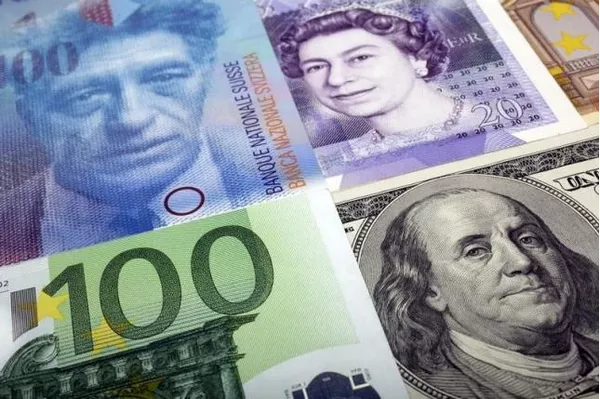The pound sterling, often simply referred to as the pound, is the official currency of the United Kingdom and its territories. It holds significant historical and cultural importance, serving as a symbol of stability and tradition. The pound sterling has a rich history dating back centuries, evolving from the Anglo-Saxon era to its modern-day form. As a tangible representation of the currency, coins play a vital role in everyday transactions, commemorative events, and numismatic pursuits.
Current Denominations
In circulation today, the pound sterling coins consist of several denominations, each with its own distinctive features and value:
- One Penny (1p): The smallest denomination, featuring a portrait of Queen Elizabeth II on the obverse and the symbol of the portcullis on the reverse.
- Two Pence (2p): Similar in design to the one penny coin but with a higher value.
- Five Pence (5p): Depicts Queen Elizabeth II on the obverse and a segment of the Royal Shield on the reverse.
- Ten Pence (10p): Features Queen Elizabeth II on the obverse and a portion of the Royal Shield on the reverse.
- Twenty Pence (20p): Bears a depiction of Queen Elizabeth II on the obverse and a segment of the Royal Arms on the reverse.
- Fifty Pence (50p): Showcases various designs, including the Royal Arms, Britannia, and commemorative editions.
- One Pound (£1): Features different designs, such as the Royal Arms, floral emblem, and notable figures from British history.
- Two Pounds (£2): Often issued in commemorative editions, portraying significant events, anniversaries, or achievements.
Design Elements
The obverse of pound sterling coins typically features a portrait of Queen Elizabeth II, while the reverse displays various designs representing British heritage, culture, and history. Commemorative editions may deviate from this standard, showcasing unique themes or special occasions. Notable examples include the Britannia design on the fifty pence coin and the floral emblem of each UK nation on the one pound coin.
Material and Specifications
Pound sterling coins are predominantly made from nickel-plated steel, copper-plated steel, nickel-brass, and bi-metallic compositions. The weight and dimensions vary across denominations, with smaller coins being lighter and larger denominations having greater weight. For instance, the one penny coin weighs 3.56 grams and has a diameter of 20.3 millimeters, while the two-pound coin weighs 12 grams and has a diameter of 28.4 millimeters.
Minting Process
The production of pound sterling coins involves several stages, including metal blank preparation, coin striking, quality control, and distribution. Metal blanks are initially manufactured to precise specifications before being fed into coin presses, where the designs are stamped onto them with immense pressure. Quality control measures ensure that each coin meets stringent standards for weight, dimensions, and visual appearance before entering circulation.
Collectible Coins
Beyond their monetary value, pound sterling coins hold significance for collectors and enthusiasts alike. Special edition coins, such as those issued to commemorate historical events or celebrate cultural milestones, often become sought-after collectibles. These coins may possess numismatic value, with certain editions commanding higher prices due to rarity, design intricacy, or historical significance. Collectors can acquire these coins through various channels, including coin dealers, auctions, and online marketplaces.
Legal Tender Status
Legal tender refers to the official currency accepted by law for settling debts and making purchases within a particular jurisdiction. In the United Kingdom, pound sterling coins issued by the Royal Mint are recognized as legal tender, obligating businesses and individuals to accept them as payment for goods and services. However, there are limitations to legal tender status, as merchants retain the right to refuse excessively large quantities of coins or denominations that are no longer in circulation.
Usage Tips
When handling pound sterling coins, it is essential to treat them with care to preserve their condition and longevity. Avoid exposing coins to harsh chemicals, extreme temperatures, or abrasive surfaces, as these can damage their appearance and structural integrity. Store coins in protective holders or albums to prevent scratches, tarnishing, and oxidation. When exchanging coins for goods or services, ensure that they are accepted as legal tender and adhere to any guidelines regarding payment methods and denominations.
Future Changes
The Royal Mint periodically updates the designs and specifications of pound sterling coins to reflect evolving cultural, artistic, and technological trends. Anticipated changes may include the introduction of new commemorative editions, revisions to existing designs, or the discontinuation of certain denominations. Additionally, advancements in minting techniques and materials may influence the composition and appearance of future coins, enhancing their durability, security, and aesthetic appeal.
See Also Why is the Pound So Weak?
In conclusion
Pound sterling coins serve as tangible symbols of the United Kingdom’s rich history, cultural heritage, and economic stability. With their distinctive designs, varying denominations, and legal tender status, these coins play a pivotal role in everyday transactions, commemorative events, and numismatic pursuits. As the currency continues to evolve, pound sterling coins will remain cherished artifacts, representing the enduring legacy of British craftsmanship and tradition.


